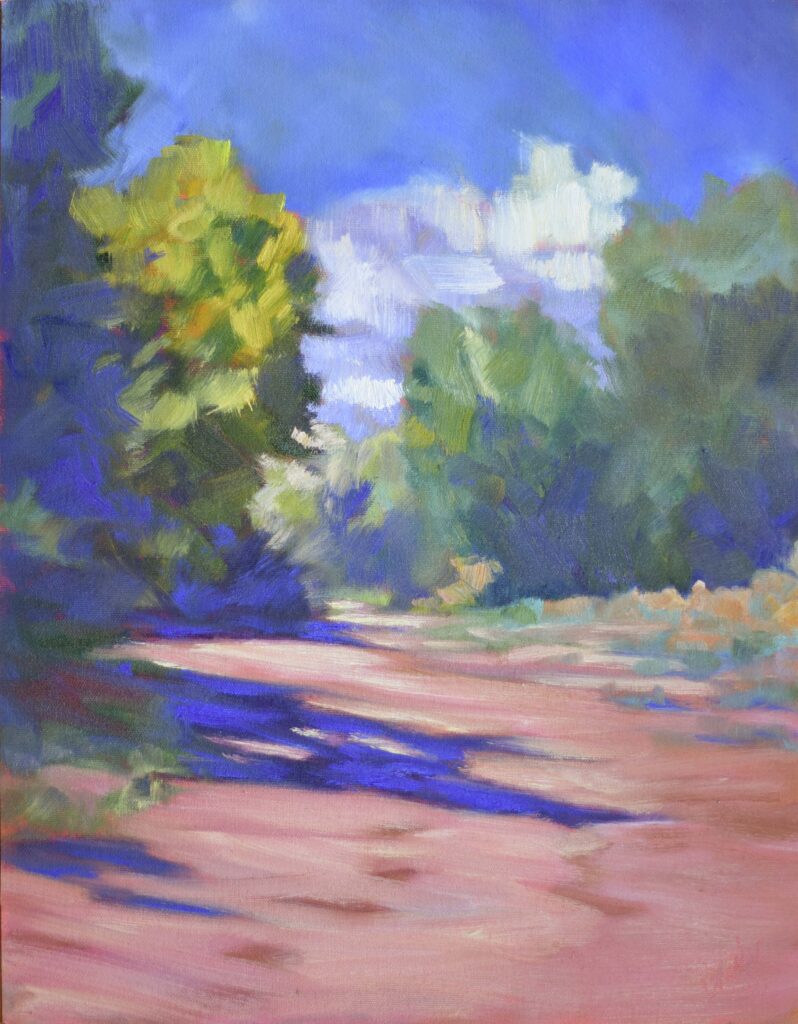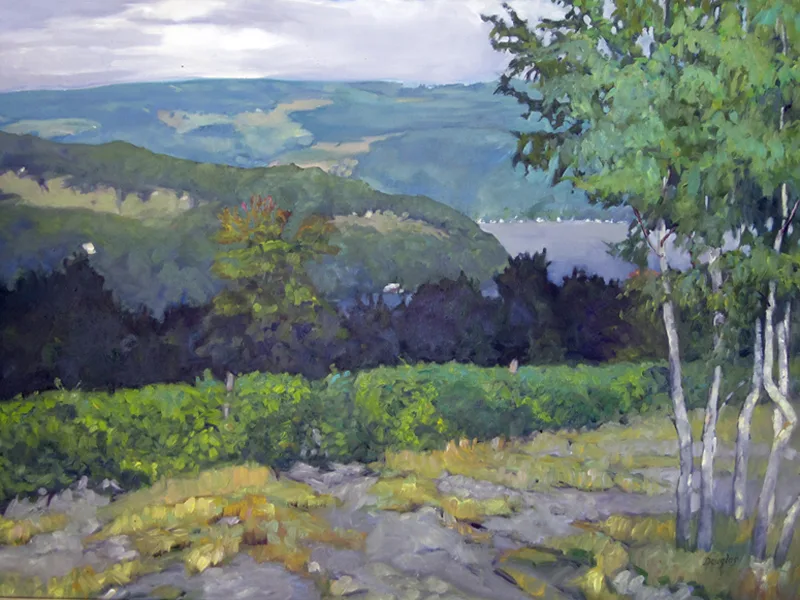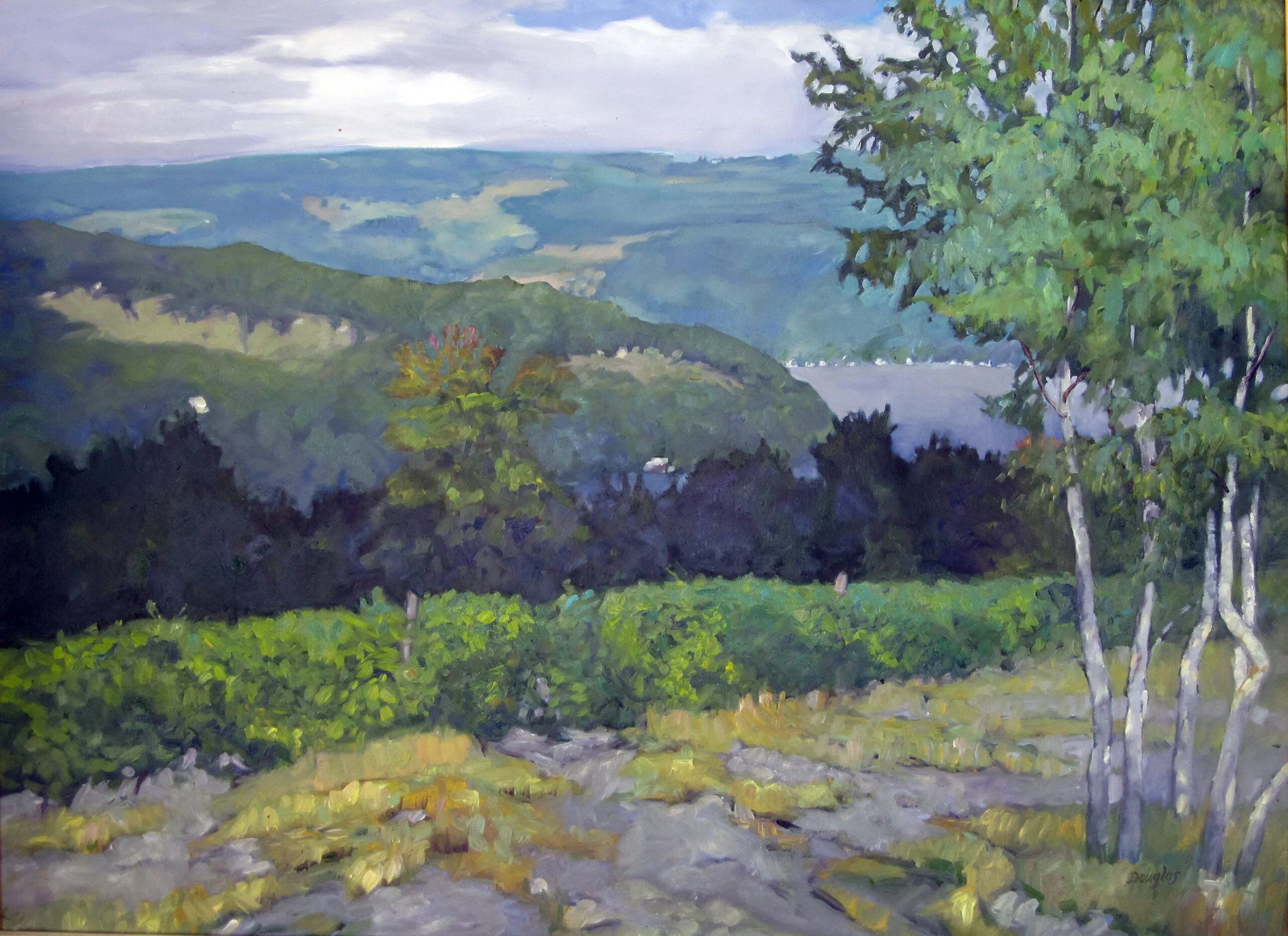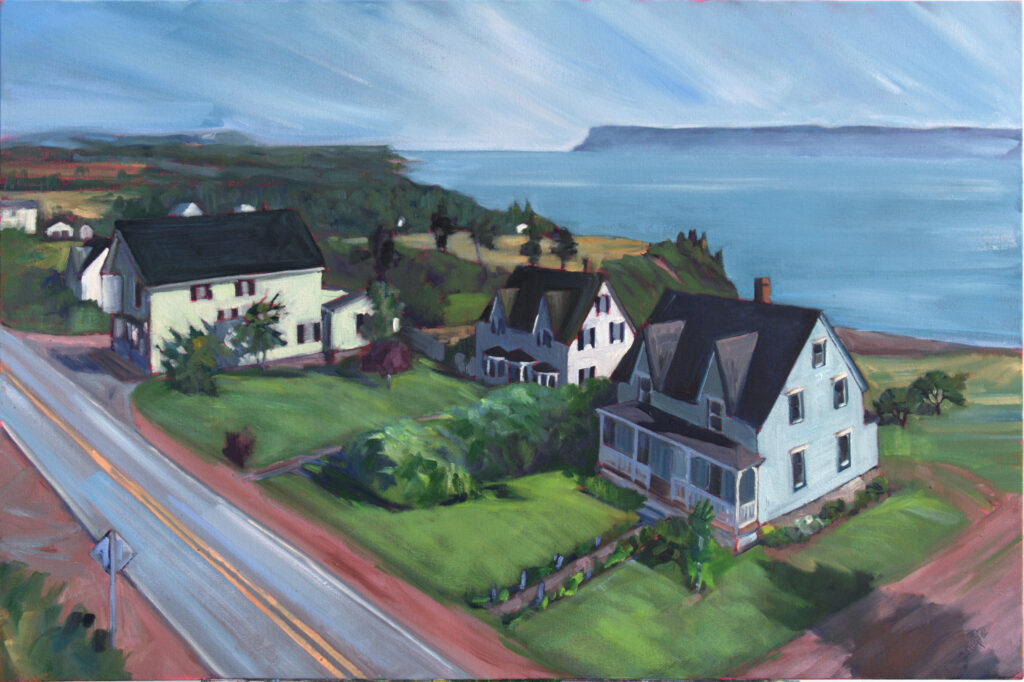There are two kinds of perspective that artists use to create depth in paintings: aerial (or atmospheric) and linear. Linear perspective uses converging lines, accurate spatial relationships, size, and placement of objects to show things getting smaller as they recede into the distance. Aerial perspective creates the illusion of depth by simulating the effect of the atmosphere on objects seen at a distance.
What creates aerial perspective?
Aerial perspective is caused by the scattering of light by particles in the atmosphere. As the distance between the viewer and an object increases, more air (and thus more particles like dust, water vapor, and pollution) lies between us and the subject.
Particle size affects how light is scattered. Fine particles, like oxygen and nitrogen molecules, cause the scattering that creates our blue skies and red sunsets. Mid-size particles, like dust, cause haziness, glare and that delicious golden light of afternoon. Big particles like water droplets, give us rainbows.

The unbreakable laws of aerial perspective
- Distant objects appear less contrasty because atmospheric scattering softens edges and reduces the difference between highlights and shadows. Conversely, nearby objects have sharper, crisper shadows and details.
- As we go back in space, the first color to fall out is red, followed by yellow, with finally blue or blue-violet remaining. (In some circumstances, the distant horizon might be grey rather than blue.) That’s because the shorter the wavelength, the more efficiently the light is scattered. That means that warm-colored objects must be desaturated the farther back they are in your picture. When in doubt, hold something neutral up to the far object and check just how ‘warm’ it really is.
- Overall, distant objects are generally less saturated than close objects, again, because of the scattering of light. However, there are times when distant mountains appear to thrum with an intense blue-violet light. Whether that’s rationally true or not, painting that feeling is more important than painting reality.
- We don’t see fine detail at long distances not because our eyes are weak, but because the scattering of light makes the image blurry. So much for my dream of someday having bionic eyes.
- Certain weather conditions increase aerial perspective. Fog, humidity, dust, and pollution increase the scattering of light, making distant objects look even hazier.
Things that aerial perspective can’t or won’t do
Aerial perspective does not mean that faraway objects are always lighter. The lightness or darkness of any passage depends on the local color and on where the sun is shining at that moment. There are many situations where the foreground is lighter than the background.
Aerial perspective isn’t just about dabbing blue hues on the mountains; it’s about carefully marking out a gradual falling off of reds and yellows, and observing shifts in detail and saturation.
You don’t get out of learning linear perspective just because you understand aerial perspective; the two work together to create a sense of depth. “But there’s no architecture in my painting, Carol,” you say. However, rocks, trees, fields, roads, clouds, and everything else in nature also obey the rules of linear perspective, so perhaps you should take one of my classes or workshops and really learn it.
Reserve your spot now for a workshop in 2025:
- Advanced Plein Air Painting, Rockport, ME, July 7-11, 2025.
- Sea and Sky at Acadia National Park, August 3-8, 2025.
- Find Your Authentic Voice in Plein Air, Berkshires, MA, August 11-15, 2025.
- Immersive In-Person Fall Workshop, Rockport, ME, October 6-10, 2025.




